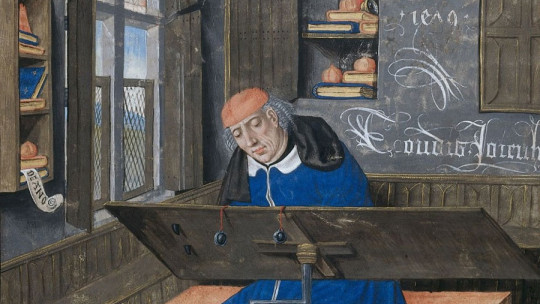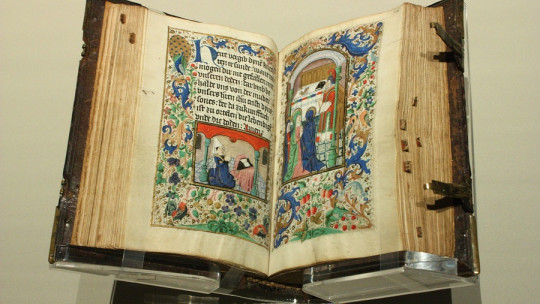
Without a doubt, many of you will know several children’s stories. Some of them are very old; so much so that they are lost in the mists of time. Nowadays, however, the moralizing concept of fables has been lost. But, in the Middle Ages, each and every one of the stories that were told had a very interesting didactic meaning that is worth remembering.
Next, we present 5 medieval stories with their respective morals We hope you enjoy them.
5 short medieval stories (and their moral, explained)
Most of the stories from the Middle Ages that we preserve today have come down to us because they were written down. Therefore, it is logical to think that it was not precisely the people who were in charge of creating these stories, but rather the learned characters. Obviously, the popular mass had its own folklore, but in this article we will focus on the so-called example medieval, a literary genre that became very famous during the time. Let’s see what it consists of.
We have already commented in other articles that the Middle Ages are a direct heir to the classics. In terms of fables, it couldn’t be any other way. The stories of the Greek Aesop (620-564 BC) were very present in medieval culture, and greatly influenced the scholars who wrote moralizing stories. On the other hand, we have the oriental stories (mainly from India and Persia) that had reached the West through Islam and that, very soon, began to be translated into vernacular languages, such as Spanish. This is the case of the famous collection of stories Calila and Dimna, whose origins date back to India and which was one of the best-known anthologies of fables in the European Middle Ages.
These stories or fables were known at the time as example (plural of exemplum, example). Its basic characteristics are brevity and the didactic and moralizing nature of its argument. We must keep in mind, by the way, that we are talking about another era and another mentality, and that their values do not always coincide with ours. Generally, the example or stories featured animals, which represented various human qualities or vices.
5 of the best-known medieval stories
Below, you will find 5 of the best-known medieval tales, along with their respective morals. The stories have been adapted for better understanding.
1. The thief and the moonbeam (from the collection of stories Calila and Dimna)
One moonlit night, a man and his wife were sleeping peacefully in their room. The man had an incredible fortune, and that night a gang of thieves tried to break into the house to steal everything. The man heard a noise and, upset, woke up his wife. When she asked him what was happening, he told her:
The wife looked very surprised, but did what her husband had asked. To her question, he answered, very loudly so that the thieves could hear:
The thieves were listening to the good man’s speech. They chuckled, satisfied at having discovered such a secret. Thus, the chief of the thieves pronounced the spell seven times, and tried to grab the moonbeam that came through the window. The fall was tremendous, and the thief broke his legs. When the master of the house came with a rod and asked him who he was and what he was doing there, the thief lamented:
The moral of this story is obvious. The thief thinks he is smarter than the person he is going to rob, and then he pays the consequences We must not believe ourselves above others, since we are always susceptible to being deceived.
2. The fox and the crow (from Count Lucanorby Don Juan Manuel).
Lo and behold, one day, a crow perched on the branch of a tree with a shiny piece of cheese in its beak, which it was going to give a good account of. But before she could eat it, a cunning fox passed by and envied the crow’s luck and also wanted to eat the cheese. So she sat patiently under the branch of the tree, and she began to say to the crow:
This fable that collects Count Lucanor He talk to us about the dangers of believing the flattery of others It is an obvious exemplum against pride.
- You may be interested in: “Narrative Therapy: the form of psychotherapy based on stories about the patient’s life”
3. The greyhound and his master (from The book of good love of the Archpriest of Hita)
A gentleman had a young, strong and fast greyhound. Every time he went out hunting with him, the dog brought him good game, which greatly satisfied his master. The gentleman was very proud of his greyhound, and showered him with pampering and care.
But time passed and the dog grew older. He no longer ran with the same speed, he no longer had the same strength; His teeth were falling out and he couldn’t grip the prey as firmly. That is why almost all of them escaped him.
One day, the poor greyhound returned without bringing anything, and the gentleman got so angry that he hit him with a stick. While licking his wounds, the dog lamented that human beings treat others very well when they are useful to them, and despise them when they can no longer benefit from them.
With this story, the Archpriest of Hita aims to raise awareness about how fleeting the interests of human beings are, and how what was once valued ends up being despised
- Related article: “190 wise phrases to reflect on life”
4. Primasso the wise and the miserly abbot (Seventh day of The Decameron by Boccaccio)
Primasso was a wise man well known in all corners of the region. Everyone who knew him wanted to sit at his table. And lo and behold, one day, Primasso heard about the estate that the Abbot of Cligny had on the outskirts of Paris and the great delicacies that were served there, and he wanted to come and offer him his compliments and eat with him. So he set off; And since the journey was a bit long, he took three loaves with him in case he got hungry along the way.
When he arrived he saw that, indeed, the abbot’s house was large and beautiful. She entered the dining room, but the abbot had not yet arrived. Primasso knew that the cleric was in the habit of sharing his table with everyone who came to visit him, so he waited patiently. However, the servants had gone to inform the abbot of his arrival. The abbot looked out discreetly and, when he saw Primasso’s beggar appearance, he flatly refused to share a table with him.
Primasso waited and waited, and meanwhile he was eating the bread he had brought. The abbot let him eat them at his table, but he refused to have food from his property served to him. Finally, seeing that the newcomer did not leave, he sent the servants to ask him his name. And when he knew that the one sitting at his table waiting for him was the famous Primasso, he repented of his greed. Not only did she go out to eat with him, but she also gave him a noble suit and offered him a good horse so that he could return comfortably to Paris.
This “seventh day” of Decameron from Bocaccio tells us about greed, especially the greed of those who have the most, as is the case of the abbot in the story. Not only that, but he also warns about the danger of believing first impressions: the abbot sees in Primasso a foolish beggar, instead of the wise and great conversationalist that he is.
5. The administrator’s tale (of the Canterbury Talesby Geoffrey Chaucer)
In a region of England near Cambridge there lived a miller with his wife and two children. The daughter was already a young girl of twenty, while the child was still a cradle baby. The miller was a very jealous and aggressive man; He always carried a dagger between his clothes, and no one dared approach his wife for fear that the man would stick the blade in her heart.
In addition to being possessive and angry, the miller was a real swindler. He made fun of everyone and used his greatest cunning to deceive the staff and keep the loot. This character was the one who ground the grain of a Cambridge school. The school administrator fell ill, so the cunning miller took the opportunity to steal more flour than he already stole normally. Scared, two students decided to go to the mill to make sure that the grinding was carried out as stipulated.
Confident of himself and his skills, the miller welcomed the young people and even gave them accommodation in his home. He knew that he could fool them, just as he had fooled the manager and everyone else. And lo and behold, that night everyone drank a lot and went to bed quite drunk. One of the students had noticed the miller’s daughter, and discreetly got into her bed. The young woman, who had also noticed him, accepted him immediately.
The other student, jealous of his companion’s fate, and eager to take revenge on the miller, went to the son’s cradle and placed it near his bed. When the miller’s wife returned from taking care of her, she looked for her crib and was scared when she couldn’t find it. Groping in the darkness, he found her and, relieved, she got into the bed next to her. That night the student gave her all the caresses she wanted.
At dawn, the student who had slept in the company of his daughter wanted to stealthily go to his bed. When he stumbled over the crib, he thought: “My God, I almost got into the miller’s bed!”, and without making a sound he advanced to the other bed, which was none other than the bed where his guest was sleeping. . So the young man got into the miller’s bed, thinking that he was his companion, and whispered in his ear, laughing, “What a night! “I have spent the entire time with the miller’s daughter.” Upon hearing those words, the man stood up in a rage, ready to kill the student. With the noise, the other young man and the miller’s wife also woke up. She took a stick from the wall and landed a tremendous blow on her husband’s bald head, because in the latent darkness she could not distinguish who was who. The miller fell to the ground dazed.
The students ran out of the house, and took the horses and flour that the miller had stolen from them. And there the mocked thief remained, lamenting his fate.
This story uses a very common resource in example medieval: humor. In the Canterbury Tales is especially appreciated; through agile and fun language, with evident erotic episodes, The author introduces the moral that he who “kills with iron, dies with iron.” That is to say: be careful with your actions, they will turn against you. It also tells us about the dangers of anger and anger.








